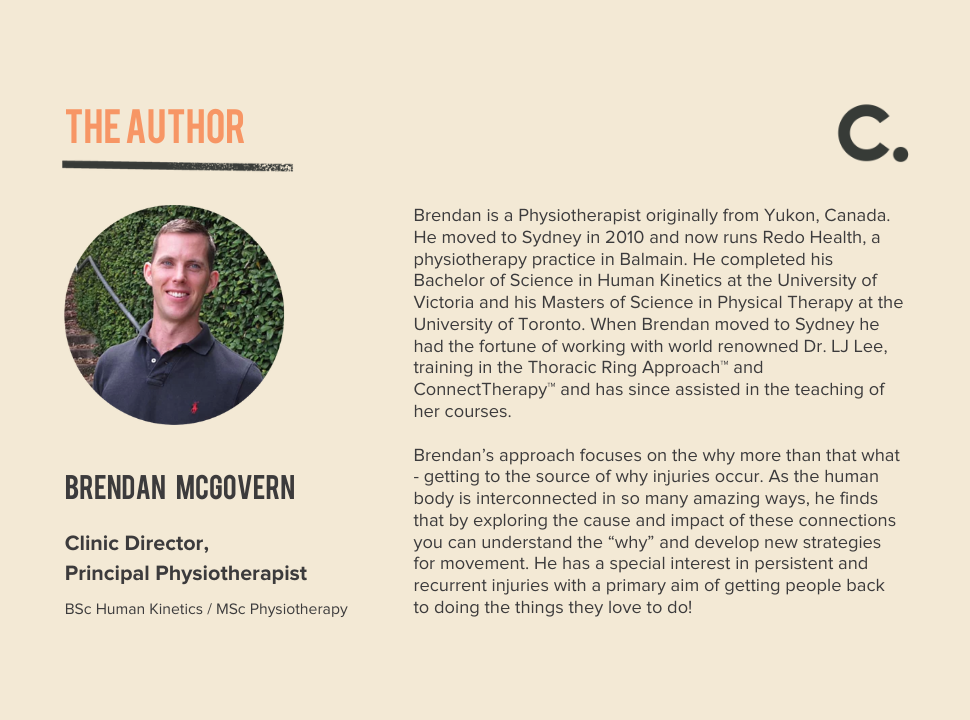A Guide to Strengthening Your Tendons
Are you a runner? Do you get sore hips, knees, ankles from your training? Do your aches and pains stop from doing what you love to do?
Runners can often experience pain in the tendons of the heel (Achilles tendon), knee (Patellar tendon) and hip (Glutei tendons). Tendon pain can be limiting and often stops you in your tracks.
So if you’re in pain, what do you do?
Fortunately, there are a couple of key things you can do to get back on the road! Through exercise and healthy eating you can strengthen and repair your tendons.
What are tendons and what do they do?
Tendons are strong cord-like connective tissue structures that attach muscles to bones. Tendons are what allow us to move our joints. They are flexible structures made of strong fibrous collagen, but unlike ligaments are inelastic, meaning they are only made to withstand so much stretch before they start to fail.
Injuries to your tendons - tendinopathy or tendinosis commonly impact the Achilles, Patellar and Glutei tendons. This can lead to pain and frustration. Not being able to do what you love to do!
How do you make your tendons stronger?
Tendons should be loaded in different ways, in order to withstand different forces or stresses that are placed on them, during running, walking and other forms of exercise and daily activities.
In the early stages of injury, you want to manage your pain and this can be done with isometrics in mid-range. You want to hold the position of the exercise for up to 45 seconds for 5 repetitions. This should be completed 2-3 times per day aiming to get up to 70% maximal voluntary contraction pain permitting. Examples include:
- bilateral heel raises
- side-lying clamshells
- supine bridge.
As pain settles you want to progress to the strengthening the tendon. The most common protocol is an eccentric strengthening protocol, where you start to add a heavy load and stretch the tendon. For example, starting with bodyweight heel raises off the edge of a step, performing 3 sets of 15 repetitions, 2x/day for 12 weeks, progressing by adding weight as tolerated.
Other loading options include heavy slow resistance training, using exercises such as squats or leg press, 6-15 repetitions with a 6 second concentric/shortening phase and a 6 second eccentric/lengthening. Squats or leg press would aim to load and strengthen the patellar and quadriceps tendons.
Examples of Exercises to Strengthen Your Patellar and Quadriceps Tendons
- Bodyweight squats +/- weight to progress
- Leg press - both legs, single leg
- Split squats
Examples of Exercise to Strengthen Your Achilles' Tendons
- Heel raises/drops
- Both feet - knees straight, knees bent
- Single leg - knee straight, knee bent
- Edge of strep single leg - knee straight, knee bent
Examples of exercises to strengthen your Glutei tendons
- Bridge with band loop
- Squats with band loop
- Clams with band loop
Does a Healthy Diet Play A Role In Strengthening Your Tendons? Does Collagen Help?
There is a mix of research on how supplementation can assist in healing. What we do know from the research is that proper hydration and a balanced diet will aid in the repair of injured tissues. Proteins help grow new healthy tissue, and when consumed are broken down into amino acids, the building blocks for making muscle and collagen, the key component that makes up your tendons.
At the end of the day, whether you are strengthening your muscles or your tendons similar principles apply. Working the tissues through various types of loading strategies at certain periods will allow the tissues to adapt, grow and become stronger. Creating a healthy environment, through proper hydration, healthy eating and getting good rest will only set you up for success.
By Brendan McGovern | Redo Health

References:
Ebonie Rio, Dawson Kidgell, Craig Purdam, Jamie Gaida, G Lorimer Moseley, Alan J Pearce, Jill Cook. Isometric exercise induces analgesia and reduces inhibition in patellar tendinopathy. Br J Sports Med 2015;49:1277–1283.
Malliaras P, Barton CJ, Reeves ND, Langberg H. Achilles and patellar tendinopathy loading programmes. Sports Med. 2013;43(4):267-86. (level of evidence: 2a)
Malliaras P, Cook J, Purdam C, Rio E. Patellar Tendinopathy: Clinical Diagnosis, Load Management, and Advice for Challenging Case Presentations. The Journal of orthopaedic and sports physical therapy. 2015 Sep:1-33. (level of evidence: 2a)
Mathijs van Arka, Jill L. Cookb, Sean I. Dockingb, Johannes Zwervera, James E. Gaidab, Inge van den Akker-Scheeka, Ebonie Riob. Do isometric and isotonic exercise programs reduce pain in athletes with patellar tendinopathy in-season? A randomised clinical trial. Journal of Science and Medicine in Sport, available online 7 December 2015
Mellor, R., Bennell, K., Grimaldi, A., Nicolson, P., Kasza, J., Hodges, P., Wajswelner, H. and Vicenzino, B., 2018. Education plus exercise versus corticosteroid injection use versus a wait and see approach on global outcome and pain from gluteal tendinopathy: prospective, single blinded, randomised clinical trial. bmj, 361, p.k1662.




























